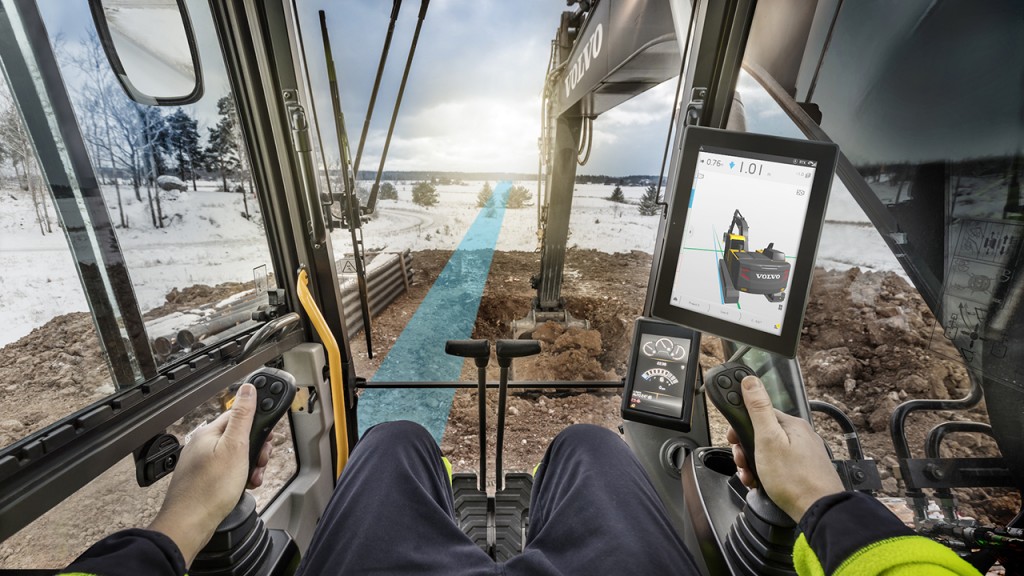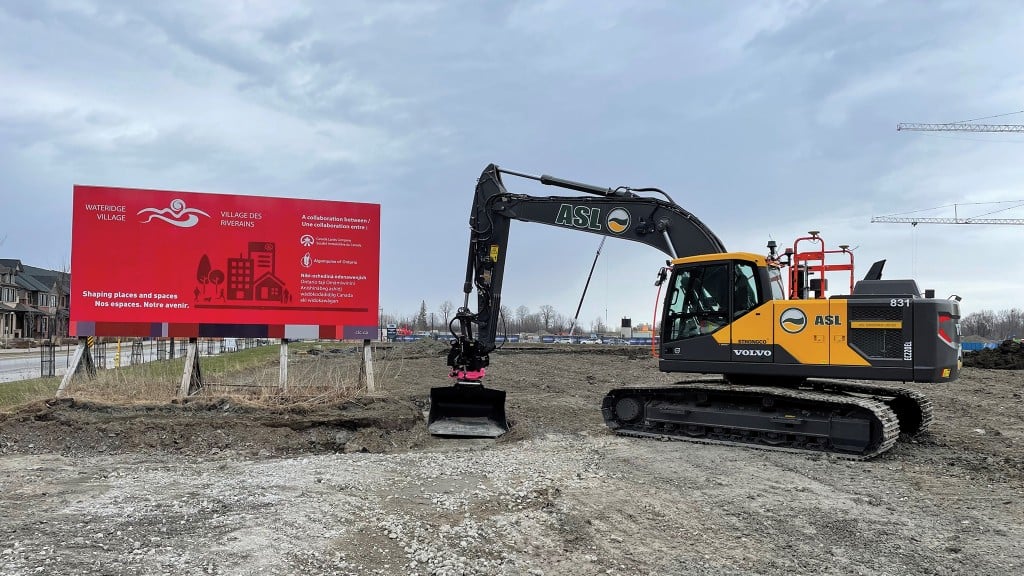
With each new model year, equipment is becoming more technology-rich - adding new standard features and optional add-ons that promise increased productivity and efficiency. While many contractors see the value in these technologies, they often have trouble determining if the cost to upgrade will be justified by ROI.
Machine control systems are among the latest innovations contractors have to choose from. By understanding the practical uses for machine control solutions and how they can reduce expenses and improve productivity, a utility contractor can make a more informed decision on whether machine control is a good investment for their operation.
Excavator machine control programs, such as Volvo Dig Assist, provide real-time feedback to operators to increase productivity, efficiency and safety on the jobsite for utilities applications. These systems allow operators to save time through easy input of job specifications and real-time progress tracking while digging to ensure the job is done right the first time, every time. Using an in-cab display, the operator can see the real-time position of the bucket and machine in relation to target grade and depth. Some systems even have 2-D and 3-D design functionality. Together, these features can provide ROI in the following six ways.
1. Trench more accurately
One of the most common uses for machine control systems in utility applications is trenching. Machine control systems offer operators the ability to input the specifications for even the most complex trenches in just a couple of minutes, including the ability to add slope or multiple layers, thereby eliminating much of the prep work.
Operators can follow a simple, long line by using the line feature and specifying the dig depth. After inputting the specifications, a virtual guideline is provided to follow as they dig the trench. Machine control systems also allow operators to add a slope requirement to the line.
Consider a utility job where the operator is laying pipe. Besides knowing how deep to dig, the operator can easily add layers for backfill materials to any depth specification and monitor progress on each layer from the cab. For example, with Volvo Dig Assist, the operator can add up to five layers to any job and toggle between them in seconds.
A positive ROI is established by ensuring that work is done correctly the first time, minimizing measurement time, errors and rework.
2. Simplify the complex
Some jobs, from trenching to applications like digging a basement, might require a more complex shape. Some machine control systems can offer operators the ability to draw 2-D shapes directly from the cab, such as a step trench for installing multiple utility lines at the same time. Depending upon the system, operators may be able to choose from a library of prebuilt shapes and modify them on the fly to match job requirements.
3-D modelling is becoming available on some systems, which will allow for uploading a CAD model for an entire jobsite into the system.
This provides ROI through reducing the need for additional surveyors on site to measure and stake out the shape, and eliminates the need to stop working to measure complex shapes, since it's done directly from the cab.
3. Work safely
A challenge with many utilities jobs can be working in tight quarters and avoiding congested utilities. With a machine control system, operators can work safely and with peace of mind due to the visual and audible warnings provided by height and depth alarms. Simply input the height and depth to indicate the depth at which the operator can safely dig without hitting utilities lines or the maximum height the arm can go to avoid power lines or other obstacles.
Traditionally, contractors have needed someone on the jobsite doing ongoing grade and depth checks. This is not necessary with a machine control system because of the level of accuracy of their sensors. The more people kept out of a trench, the safer it is going to be.
Avoiding even one accident or incident of utility line damage can result in a positive ROI for a machine control system.
4. Reduce labour costs
Reducing the time spent checking and re-checking depth and slope accuracy frees up crewmembers to do other work, which can lead to gains in jobsite productivity and efficiency. After some time using the system, someone might do a quick check only at the end of the day. And after using the system for a few jobs, a crew might not even feel the need to perform these checks.
This is just one of the ways machine control systems can reduce labour costs, which also helps realize the ROI for investing in the system. Another is that operators are not going to waste time overdigging or reworking because they can dig with confidence knowing that they can see job progress and where they need to dig in real time.
While machine control systems will not eliminate the need for on-site surveying or engineers, they will reduce the need. For instance, some site prep work, such as putting stakes in the ground, is not required with machine control systems.
Machine control systems can deliver a positive ROI by saving a lot of time and labour, and can even allow contractors to bid on more or larger jobs - particularly in tight labour markets in which finding skilled labourers can be a challenge.
5. Gain a competitive edge
In addition to reducing labour costs, some machine control systems can allow for easy operation where other excavators might struggle, such as under water. With watertight sensors, operators can do underwater work by inputting job specifications and seeing, in real time, the position of the bucket on the screen - even though the operator can't see under water. Getting sight into unseen places increases the accuracy of challenging jobs. Being able to work where others can't allows contractors to bid on more jobs and ensures a positive ROI when using machine control systems.
6. Turn novices into experts
Even new operators will be able to learn how to use machine control systems - they are built to make the job easier. It is as simple as running a tablet or smartphone, with the learning curve to set up projects at less than two minutes. Operators can begin working after setting the position of the excavator relative to the ground using a construction laser or the bucket in just another two minutes.
Machine control systems are also a great training tool, because the operator does not have to worry about making errors and has a visual aid to see how close they are to the target grade, depth and shape. Because of the time saved with the reduced learning curve and training time, machine control systems help deliver a high ROI.
Low risk, high reward
With all the capabilities of machine control systems, utilities contractors will find that their investment will pay off very quickly by saving time and labour and improving the overall quality of work. They can turn to their dealers to see if a machine control system is a good fit for their operation, and hesitant customers may want to try out machine control systems by renting one outfitted with the proper equipment.
Once contractors see machine control systems in action, the benefits and ROI will be apparent.



